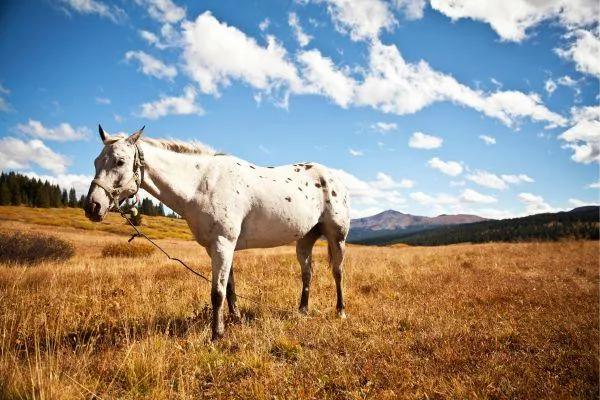
Tethering Horses – Why It’s Best Avoided
Tethering a horse might seem like a straightforward way to manage grazing, but it’s rarely a good idea. In most cases, it poses serious risks to the horse’s safety, health and welfare. If you're considering tethering, it should only ever be a short-term solution, and only when all legal requirements and welfare needs can be met.
Why Tethering is Problematic
Horses are highly active, social animals with a strong flight response. They need space to move, graze freely, interact with other horses, and lie down to rest. Tethering restricts all of that.
Even on a well-selected site, a tethered horse is vulnerable to:
Tangling or choking
Injuries from panic or attempts to escape
Lack of shelter or shade
Limited access to clean feed and water
Inability to exercise or interact normally
In short, tethering often creates more problems than it solves.
What the Law Says
Under the Animal Welfare (Care and Procedures) Regulations 2018, tethering horses is legal only under strict conditions. These are not suggestions. They are minimum requirements.
To legally tether a horse in New Zealand:
The horse must be healthy, mature, and trained to be tethered
The site must provide adequate shelter, shade, feed and water at all times
The tether must not cause injury or distress and must allow free movement
The horse must be checked regularly and not left tethered for more than 15 hours without being released for exercise
Horses that are young, pregnant, nursing, sick or injured must never be tethered
The tethered horse must not be able to reach public roads or hazards, and the site must be free of toxic plants or dangerous objects
Failure to meet these conditions can result in fines or prosecution.
If You Must Tether
In rare cases where there is no alternative, tethering may be considered, but only with extreme care.
Best practice for short-term tethering:
Choose a calm, well-handled horse that is accustomed to being tethered
Use a wide, soft halter and lead, not a chain or wire
Ensure the tether is attached to a well-anchored post or pin, allowing the horse to graze and turn freely
Select a flat, hazard-free area with good footing and no entanglement risks
Provide constant access to clean water, quality feed, and weatherproof shelter
Keep the tethered horse within sight and under regular supervision
Never tether near roads, cliffs, drains or other hazards
Always release the horse at least once every 15 hours for exercise and social contact
Even when all of these conditions are met, tethering should never be considered a long-term arrangement.
Alternatives to Tethering
Where possible, use fencing and strip grazing to manage pasture access. Mobile yards or electric tape systems can be set up quickly and allow for safer, more natural grazing behaviour.
If you're trying to rest paddocks or reduce grass intake, a well-fitted grazing muzzle used in a secure paddock may be a better option than tethering.
Final Word
Tethering a horse may once have been more common, but today we know better. It should not be part of routine management on any lifestyle block. If you're doing it, ask why and for how long. Then look for a safer, more humane alternative.
Looking after animals means doing what’s right, even when it’s not the easiest option.
Our What You Need to Know Before You Keep Livestock course includes guidance on animal care and legal responsibilities for lifestyle farmers.

